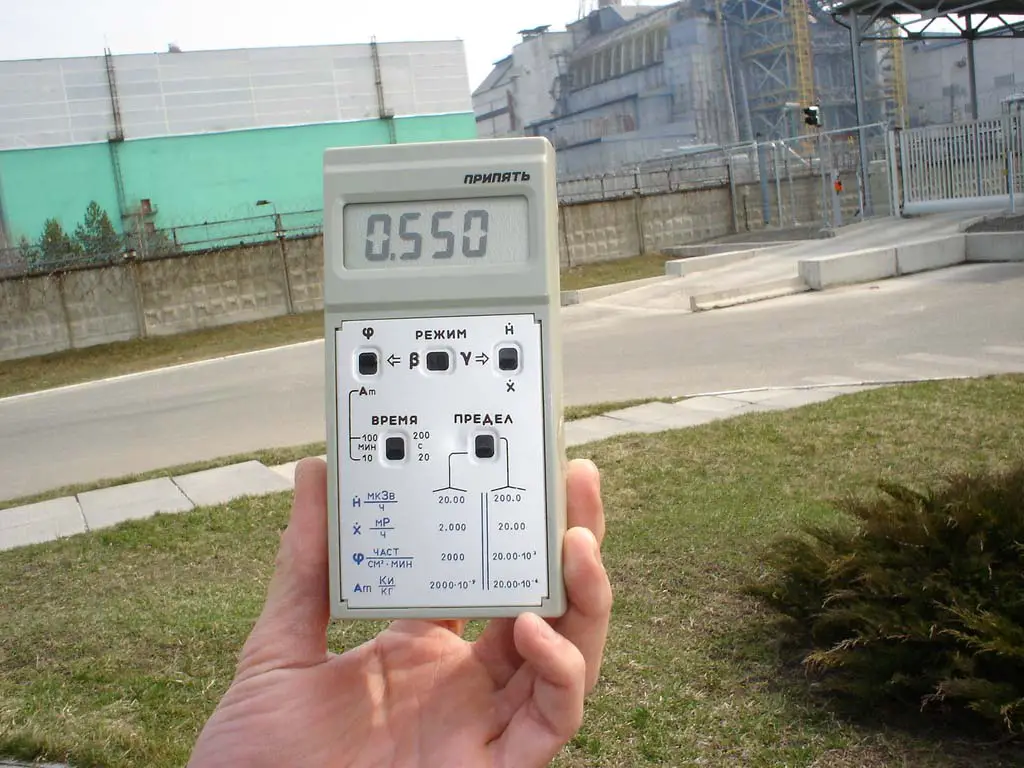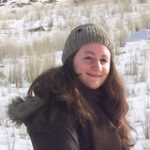By Lisa Horner
In the first part of this article (on SRAS.org) I briefly detailed the history of the Chernobyl disaster, the worst nuclear accident in history. Hundreds of thousands were affected, tens of thousands killed, and an entire city evacuated and abandoned. Today, the only life and economy that has returned the area, besides the workers involved in the ongoing cleanup, is a small, rugged tourist industry that takes the curious into what had been ground zero.

Picture from SAM Travel Ukraine.
I took a tour of Chernobyl through a company called SoloEast. Before booking, I had read it was a good idea to check around as prices can vary (at least partly depending on the size of the group). Besides SoloEast, I contacted New Logic, Sam and the Ukranian Hostel Association asking to join a group.
SoloEast was the first to respond – quoting me $185 for a group tour in which I would be joining ten other people. A few days later I got a response from New Logic, but they didn’t give me a price quote because they were aware I had already received a quote from SoloEast, who are apparently connected with them. If you want to get several price quotes, I’d recommend that you contact different agencies using different email addresses and names.
There are several restrictions and many precautions set up on the tour. Those attending must be at least 18 years old, and you must bring your passport. You cannot wear shorts, open-toed shoes, or tank tops. Those that are not properly dressed are left behind.
Taking photos and video is allowed almost everywhere, except of checkpoints, security devices (including any fences) and certain areas specified by the guide.
Altogether the tour takes about nine hours (including travel time), and involves a lot less walking than I anticipated – we were in the bus most of the time. We met in Independence Square in downtown Kiev at 8:45 am. We were bussed to Chernobyl, about eighty miles away. The bus was equipped with televisions on which they showed a documentary film about the incident and its aftermath. The video is quite informative – so if you’ve skipped part one of this article, you can still be well-informed for the tour once you get there.

We reached the first checkpoint and piled out of the bus. One by one, they took our passports, checked their lists to make sure we were on it, and scrutinized our passport photos and faces as fat bees buzzed around our heads.
We got back in the bus and headed for ChernobylInterInform, a state-run agency founded to encourage the study of the area and incident and which also helps coordinate tours. At InterInform we were introduced to our guide, Vladimir. Vladimir, one of 130,000 nuclear refugees after the accident at Chernobyl, now works for the agency. He spoke in Russian and an interpreter translated. He told us about the accident, eagerly answered our questions, and showed us pictures that were taken of Chernobyl and the surrounding areas in the days and years following the disaster.
One picture that was particularly memorable showed an enormous junkyard with vehicles piled on top of each other. Some 1,500 vehicles, used as clean-up tools after the accident, were contaminated and hence dangerous, and most of them are still out in the open and not properly stored to this day. We were told we wouldn’t be visiting any of the areas where service vehicles were located or buried. However, if you’re interested in that, there’s a special tour that focuses on the clean-up after the catastrophe.
Vladimir, our guide, told us that today workers who are participating in the clean-up work twenty minutes a day and earn a full-time salary. They are closely monitored to measure how much exposure they receive each time, and can only work until they reach a certain limit. Then, they must find new careers.
We signed a form that explained the rules (no wandering off from the tour guide, no picking stuff up or taking anything out of the area, no taking pictures in areas the guide specifies as a no-photo zone, etc.). There was also a release-from-liability section that stated that if this tour should in any way have any negative affect upon your health, you will in no way hold anyone other than yourself responsible. Everyone in the group signed and on that note, we set off for Reactor No. 4, where the explosion took place.

Our guide had a radiation detector, and he held it up during the bus ride, so we knew when radioactivity was rising or falling. On the way to Reactor No. 4, we passed large fields and some forests. The fields intermittently had bright yellow signs sticking out of the ground, which showed where radioactive material had been buried so that future generations can eventually move the material to safer storage. We passed a wide, empty patch where there had once been trees, which had burned down not from fire, but from radiation.
We stopped along the road and got out of the minivan to look at a construction site. Reactors 5 and 6 had been begun but never finished and the bulldozers, material, and partially-constructed reactors had been left as they had been in 1986. We were told not to step off the road into the grass as this was an “unclean” (contaminated) area. Vladimir told us that the road we were on had been cleaned hundreds of times but becomes contaminated again because of the surroundings. The body of water ahead of us was highly contaminated. Thankfully, it’s still water that does not flow to other areas. We were told that there was a water supply underneath Reactor No. 4, and if the concrete separating the radioactive material from the water broke, it would have contaminated Ukraine’s entire water supply. Thankfully that didn’t – and hasn’t – happened. Vladimir told us to stomp our feet – but not wipe them on the ground – for 15-30 seconds before getting back into the van.
We got out of the vehicle again, only 109 yards away from Reactor No. 4. We were given instructions not to photograph any part of the reactor that showed fence, entrance or exit points, – which was very difficult if not impossible. You had to decide whether to risk it – the Ukrainian police, known as “militsia” randomly check tourist’ photos at checkpoints by clicking on the camera’s review button. If they find any pictures breaking rules, they will confiscate them (often by taking the memory stick). The militsia reserves the right to confiscate any items from tourists taking the trip.

We all stared at Reactor No. 4 while Vladimir told us that nobody knows what is going on inside of it. The sarcophagus built around it to keep the radiation in has sealed it completely. Scientists can only theorize about what is going on inside: it’s believed chemical reactions have given birth to new elements. We also learned that the hastily built sarcophagus is deteriorating. Several attempts had been made to begin a second protective layer around the first, but funding was – and still is – a major issue, and the project wasn’t started until 2007. The new 1.7 billion dollar construction is estimated to be completed by 2012.
We got back in the minivan and headed for the ghost town of Pripyat, where there was another checkpoint where our passports were checked to make sure we were on the militsia’s list.
Pripyat was a city of 43,000 where the plant workers lived. Our guide told us that before the accident it had the highest birth rate in Ukraine. The city was prospering. Now, more than 20 years after the accident, the radiation level still makes the city uninhabitable. Most of the windows are broken. Trees and shrubbery are overgrown, slowly growing into the buildings. We were brought to an empty elementary school. The floors are covered with glass, papers, pieces of wood, books, notebooks, Soviet posters, and random items such as a shoe or a doll. You can still read the teachers’ Russian writing on the chalkboards: one lesson was practice dictating telephone numbers. We also visited a commercial building with trees growing out of the floors, glass and other debris all over, walls missing – it looks like it had been through a war, but it’s just the result of the elements’ wear without human upkeep. We also walked through a recreation facility and amusement park – both built not long before the accident.
At the amusement park our guide, Vladimir, brought us over to a highly radioactive patch of grass about 6×4 feet in the middle of the concrete. “Don’t step here,” he said, as we all crouched around him snapping pictures of the radiation detector in his hand going berserk. He also showed us a deformed tree that was lying on its side with the branches growing straight up. After a few minutes at the amusement park, he said, “Let’s go. We can’t stay here. It’s not clean.”

We got in the minivan again and Vladimir told us we were about to drive through a highly radioactive zone. Again he held up the radiation detector so we knew when radiation was rising or falling. By this time, the group mood was slightly depressed – no more questions for the guide, no dark banter tossed around. We all sat silently and either stared out the window or watched Vladimir’s radiation detector. I think most of us were ready for the tour to be over.
We pulled up to a small building and were told to get out. It was the last control point, and it was time to measure our radiation. Vladimir showed us how to stand between two pieces of metal, looking forward with our hands placed on the sides while the machine took a few seconds to determine whether we were “clean.” I had read in my guidebook that only one person on these tours had ever actually set it off – a Dutch photographer who had wandered off from the group.
We were brought back to InterInform and were stuffed full of borsh, bread, buns, carrot salad, fish, cabbage-stuffed pelmeni, and a turkey hotdish. They brought each dish out to us rapidly and if we hadn’t finished the one prior they’d try to take it away. Our tables were piled with plates of food at various stages of consumption. Although there had been less walking than I thought there would have been, it had been an exhausting day both physically and emotionally and we found we were all starving. We got back in the bus, and most people slept on the way back to Kiev.
While a tour of a radioactive fallout-out zone is not likely to be something you would do twice or perhaps even want to do twice – it is something I’m glad I did once.
On to “Chernobyl: A Short History of the Human Impact” (On SRAS.org)>>>>
[xyz-ihs snippet=”THE-SCHOOL-OF-RUSSIAN-AND-ASIAN-STUDIES”]






